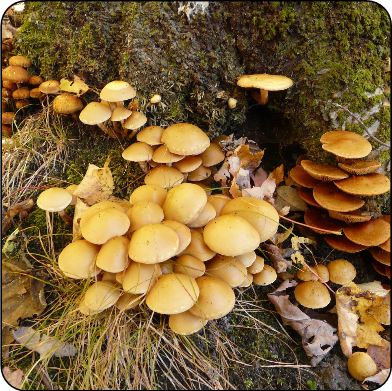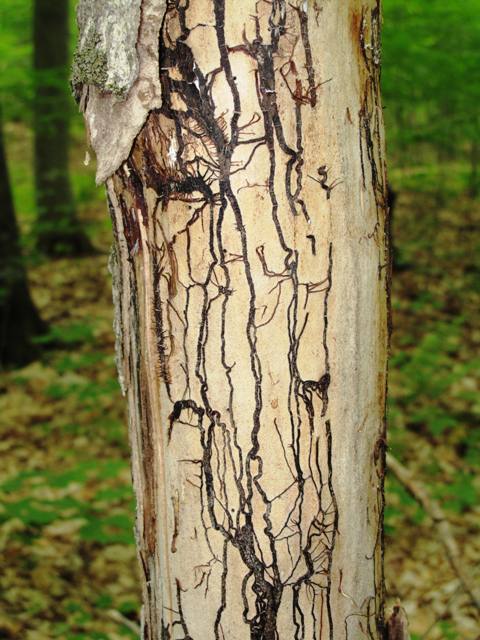Armillaria root rot
Information about Armillaria root rot (Armillaria mellea), a forest disease found in Ontario.
Overview
- Native to North America.
- Very destructive and widespread disease in Ontario, involving pathogens that attack the roots and base of trees.
- Disease is also known as shoestring root rot or honey mushroom due to the yellow-orange fruiting bodies.
Host species
- Fungus affects many deciduous and evergreen tree species.
- Main hosts include: balsam fir (Abies balsamifera), birch (Betula), spruce (Picea), pine (Pinus), white cedar (Thuja occidentalis), larches (Larix), maples (Acer), poplars (Populus) and oaks (Quercus).
Characteristics and life cycle
- A causal fungus that is typically present in the soil, and becomes aggressive on trees when unfavorable growing conditions exist for the tree.
- Conditions can include: drought, soil compaction, wounding of roots, nutrient deficiencies, insect defoliations.
- The infection:
- begins when the fungus, living in the ground, sends out filaments that invade healthy roots
- moves to the root collar and spreads to the tree trunk with infection inducing sapwood decay in the affected parts, and eventually killing the tree
- In the fall, golden yellow fruiting bodies produce spores that are dispersed by the wind.

Symptoms and damage
- Trees with Armillaria root rot disease may not show external symptoms.
- In affected trees, the upper foliage typically becomes sparse and the leaves undersized and twigs die.
- Infected trees usually show a soggy, whitish layer of fungal threads (mycelial mat) between the surface of the inner bark and the outer sapwood.
- In the fall, clusters of overlapping honey-coloured mushrooms appear at the base of trees or on the adjacent soil surface.
- In forest stands, the disease will often kill trees either singly or in patches known as disease centers, which will continue to grow as the disease spreads.

Control measures
Affected trees are probably not curable. However, if the disease is detected early enough, the host tree may be saved. Prevent the disease by avoiding the conditions which cause tree vigour to decline. Avoid re-planting at a location from which a diseased tree has been removed, since Armillaria root rot can persist for many years.
Updated: July 28, 2022
Published: July 18, 2014